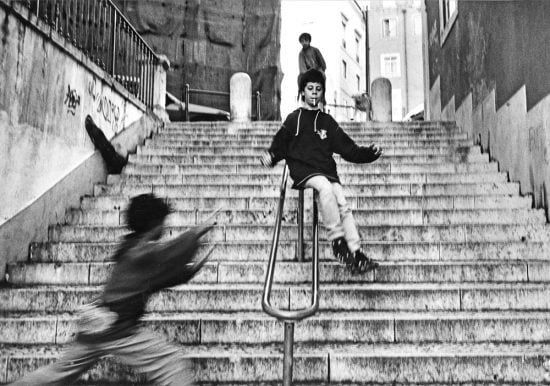Some Known Facts About Street Photographers.
Some Known Facts About Street Photographers.
Blog Article
Rumored Buzz on Street Photographers
Table of ContentsExamine This Report about Street PhotographersStreet Photographers Things To Know Before You BuyEverything about Street PhotographersSome Known Incorrect Statements About Street Photographers Not known Facts About Street Photographers
Road professional photographers do not necessarily have a social purpose in mind, however they prefer to isolate and catch minutes which may otherwise go undetected.Though he was influenced by most of those who affected the street professional photographers of the 1950s and '60s, he was not chiefly curious about catching the spirit of the road. The impulse to aesthetically record people in public started with 19th-century painters such as Edgar Degas, douard Manet, and Henri de Toulouse-Lautrec, that worked side by side with professional photographers trying to capture the significance of city life.
Due to the fact that of the relatively primitive innovation readily available to him and the lengthy exposure time required, he had a hard time to catch the pressure of the Paris roads. He trying out a series of photographic techniques, trying to discover one that would certainly allow him to capture movement without a blur, and he found some success with the calotype, patented in 1841 by William Henry Fox Talbot. Unlike Atget, photographer Charles Marville was employed by the city of Paris to produce an encyclopaedic paper of Haussmann's city preparation task as it unravelled, hence old and brand-new Paris. While the professional photographers' topic was basically the very same, the outcomes were considerably different, demonstrating the impact of the photographer's intent on the character of the images he produced.
Offered the fine quality of his photos and the breadth of product, engineers and musicians often purchased Atget's prints to utilize as referral for their very own job, though business passions were rarely his major inspiration. Rather, he was driven to photograph every last remnant of the Paris he loved. The mingled passion and seriousness of his objective luster through, leading to photos that tell his own experience of the city, high qualities that expected road photography of the 20th century.
Getting The Street Photographers To Work
They reveal the city via his eyes. His job and fundamental understanding of digital photography as an art type served as ideas to generations of digital photographers that complied with. The future generation of street photographers, though they likely did not describe themselves as such, was introduced by the photojournalism of Hungarian-born digital photographer Andr Kertsz.
Unlike his peers, Brassa used a larger-format Voigtlnder electronic camera with a longer exposure time, forcing him to be more computed and thoughtful in his practice than he may have been if using a Leica. (It is assumed that he might not have had the ability to afford a Leica back then, but he did, nevertheless, use one in the late 1950s to take colour photos.) Brassa's pictures of the Paris underworld lit up by artificial light were a revelation, and the collection of the series that he published, (1933 his response ), was a significant success.
Cartier-Bresson was a champ of the Leica video camera and among the initial professional photographers to optimize its capabilities. The Leica enabled the photographer to engage with the surroundings and to catch minutes as they happened. Its fairly tiny dimension also assisted the photographer fade right into the history, which was Cartier-Bresson's favored strategy.
Street Photographers Things To Know Before You Get This
It is due to the fact that of this essential understanding of the art of photo taking that he is often attributed with rediscovering the tool throughout once more about a century because its invention. He took photographs for greater than a half century and affected generations of digital photographers to trust their eye and instinct in click for info the moment.
These are the inquiries I shall try to address: And after that I'll leave you with my very own interpretation of street photography. Yes, we do. Let's begin with specifying what an interpretation is: According to (Street Photographers) it is: "The act of defining, or of making something certain, distinct, or clear"
No, definitely not. The term is both limiting and misleading. Seems like a road photography ought to be images of a streets ideal?! And all road digital photographers, except for a small number of outright beginners, will fully value that a street is not the vital component to road photography, and in fact if it's an image of a road with maybe a few dull individuals not doing anything of rate of interest, that's not road photography that's a picture of a street.
The Best Strategy To Use For Street Photographers
He makes a legitimate point do not you assume? While I concur with him I'm not certain "honest public digital photography" content will catch on (although I do kind of like the term "candid digital photography") due to the fact that "road photography" has actually been around for a long time, with lots of masters' names attached to it, so I believe the term is right here to stay (Street Photographers).
You can fire at the coastline, at an event, in an alley, in a park, in a piazza, in a cafe, at a gallery or art gallery, in a metro terminal, at an occasion, on a bridge, under a bridge ...
Yes, I'm afraid we terrified no choice! Without rules we can not have a definition, and without a definition we don't have a style, and without a category we don't have anything to define what we do, and so we are stuck in a "regulations meaning style" loophole!
The Definitive Guide to Street Photographers

Report this page